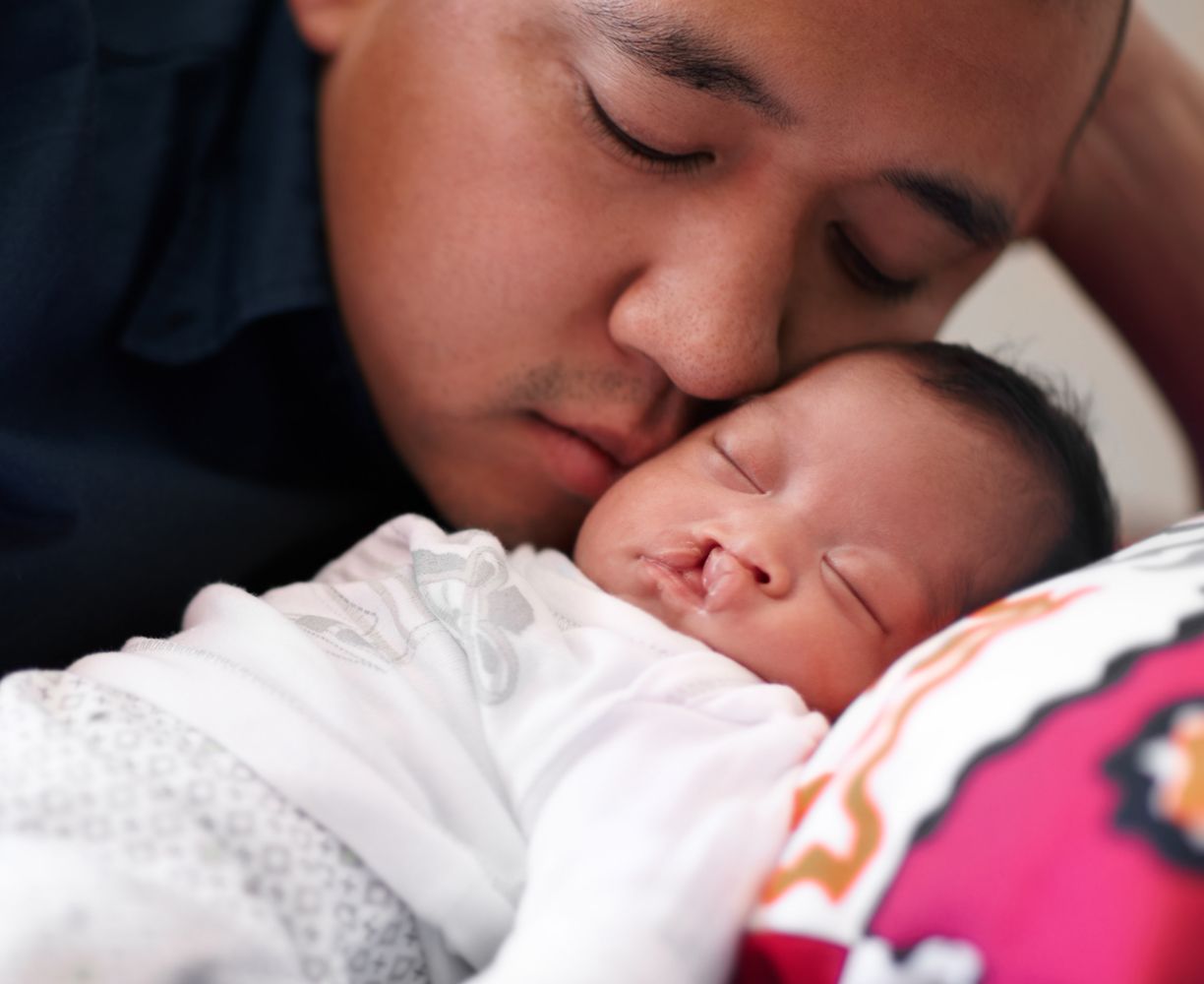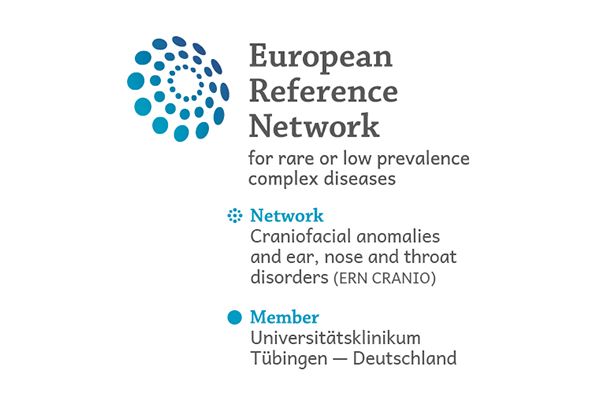Cleft lip and palate (LKG)
The Center for Cleft Lip, Palate and Craniofacial Malformations (ZLKGKF) is one of the larger specialty centers of the ZSE. The specialties of oral and maxillofacial surgery, orthodontics, pediatric neurosurgery and neonatology have joined forces here to ensure optimal care for patients with the corresponding clinical pictures. In this context, other specialties such as prenatal medicine, neuropediatrics, anesthesiology, ophthalmology and otolaryngology, phoniatrics and pediatric audiology, radiology, general dentistry, and medical genetics are regularly consulted.

Interdisciplinary consultation for LKG clefts and craniofacial malformations
Contact
frontend.sr-only_#{element.icon}:
Outpatient Clinic of the Department of Oral and Maxillofacial Surgery,
Dental Clinic Building,
Osianderstr. 2-8,
72076 Tübingen, Germany
Directions
|
Wednesdays 9 am - 3 pm |
+49 7071 29-83479 |
Department of Orthodontics:
frontend.sr-only_#{element.icon}:
Polyclinic for Orthodontics, Dental Clinic Building,
Osianderstr. 2-8,
72076 Tübingen, Germany
Directions
|
+49 7071 29-82160 |
Interdisciplinary consultation for
cleft palate and craniofacial malformations
Here you will be seen by the staff of oral and maxillofacial surgery and, if necessary, colleagues from orthodontics will be consulted. A speech therapist is also on site. Within the framework of this consultation, our patients are regularly checked, and you can also consult us regarding second opinions and further therapy planning.
Therapy
The therapy of your child takes place in our interdisciplinary center accompanied by all departments. The departments of orthodontics and maxillofacial surgery are involved in a leading role, especially in the case of cleft palate.
Orthodontic treatment accompanies you or your child from the first hours of life and can last into adulthood. Our center has years of experience and expertise in the therapy of childhood malformations in the maxillofacial region to ensure optimal pre-surgical treatment and achieve the best possible outcome.
The surgical therapy of cleft lip is basically divided into primary treatment (i.e. the actual closure of the cleft) and secondary treatment (any necessary corrective measures). Our center follows the concept of lip closure at 4-6 months, combined hard and soft palate closure at 12 months, and closure of cleft palate in the mixed dentition at 8-10 years.
- until 48 hours after birthCare by means of a palatal cover plate
The newborn child with a cleft palate should be seen by the orthodontist as soon as possible after birth, preferably within the first few days of life. In the case of clefts affecting the palate, a fitting with a so-called palatal plate should be performed as early as possible. For this purpose, a low-risk 3D scan of your child's upper jaw is performed with an intraoral scanner. Through digital workflow, the palatal plate is 3D printed and can be fabricated in one day.
By means of the palatal plate, a functional separation of the nasal cavity from the oral cavity is achieved, thus avoiding a malpositioning of the tongue in the cleft area. Such an incorrect positioning could otherwise result in a widening of the cleft. In addition, maldevelopment and malpositioning of the jaw segments can be reduced, as well as growth guidance of these into their correct position. In the case of double-sided LKG clefts, protrusion of the intermediate jaw, i.e. forward growth of the middle jaw segment, can be prevented in the best possible way. Due to the rapid growth of the infant and in order to avoid pressure points, the plate is checked, adjusted and renewed if necessary. - from the 3rd monthENT treatment
As a consequence of a soft palate cleft, a hearing loss and consequently a speech development disorder may develop. The middle ear is ventilated by the ear trumpets. These tubes are physiologically opened by the soft palate muscles. In malformed cleft muscles, this does not occur regularly and then leads to a ventilation disorder with formation of a middle ear effusion and hearing loss. All children with a soft palate cleft are therefore regularly examined by an ENT specialist. From the 3rd month of life, computer audiometry is performed. If necessary, an incision is made in the eardrum (paracentesis) to improve middle ear ventilation, and tympanostomy tubes may be inserted. - 4-6 monthsCleft lip surgery
The goal of cleft lip surgery must be to establish continuity of the lip muscles and create a harmonious lip shape. The operation is usually performed at 4-6 months of age, depending on the general development of the infant. The rule of 10 (weight 10 pounds, hemoglobin 10 g/dL and 10 weeks old) should be followed. Further illnesses of the child may lead to postponement of the surgery date. During the surgery, the cleft lip is closed and, if necessary, the floor of the nose is reconstructed (within this framework in the case of complete clefts). For this purpose, in case of unilateral cleft lip, we use the incision according to TENNISON-RANDALL. By making an angular incision, we succeed in correcting the vertical shortening of the lip caused by the cleft, giving it a natural and aesthetically pleasing appearance. In case of double-sided clefts we choose the surgical procedure according to PFEIFER. - 6- 12 monthsPalatoplasty (hard and soft palate)
The aim of palatoplasty is to close the hard and soft palate. The oral and nasal cavities are separated. Furthermore, a well-moving, sufficiently long and functional soft palate must be produced, which ensures a complete closure of the nasopharyngeal cavity when closing sounds are formed. Early closure of the palate promotes proper speech development in the child. On the other hand, if the closure is too early, scarring-related growth impediments may occur in the subsequent period. Taking this contradiction into account, we close the soft palate using the intravelar veloplasty technique according to Kriens as well as the hard palate at the age of 6 - 12 months. With this method, the natural muscle loop is created. This part of the palate has the greatest importance for the acquisition of speech and is therefore reconstructed at an early stage. - from the age of 1Speech therapy
Problems with food intake in infancy are normalized with the help of functional therapy (orofacial regulation therapy according to Castillo Morales and Pardovan). In addition, the growth of the lower jaw is stimulated. A cleft palate can also lead to a speech development disorder due to a defective function of the soft palate. Due to the cleft and often shortened soft palate, a seal between the soft palate and the back of the pharynx cannot be completely formed, which is, however, necessary for the formation of the closing sounds (plosives, "k" "g"). This leads to an escape of air from the nose and consequently to a nasal voice sound (rhinophonia aperta) and in the worst case to an incomprehensibility of speech. The soft palate is a musculature that can be trained playfully in the course of logopedic therapy. The aim is to acquire intelligible speech by early, intermittent therapy until the child starts school. - from 5 yearsOrthodontics
The primary treatment (plate therapy) of cleft children is often followed by further orthodontic treatment to accompany growth. The beginning and extent of this therapy are individual and depend on the severity of the cleft. Thus, a functional orthodontic therapy with removable braces may be necessary, or in adolescence a therapy with multibracket appliance (fixed braces). If the lateral incisors are not in place in the case of cleft jaws, either a gap closure by orthodontic treatment or a gap opening and later prosthetic treatment may be necessary. In this case, parents and children are closely involved in the decision-making process in order to achieve an optimal and satisfactory result. - 8-10 years
Jaw cleft osteoplasty
As a result of a cleft jaw, bone is missing in the tooth-bearing section. In some cases, the lateral incisor is not located in this area. For regular tooth eruption and placement of the teeth bordering the cleft, the cleft must be closed bony. The cleft is filled with a bone graft. Different surgical times are advocated for this closure, depending on the center. Since bridging this bone defect too early contributes to significant growth inhibition, we perform a so-called secondary cleft palate osteoplasty in mixed dentition at the age of 8-10 years. The bone graft is obtained minimally invasively from the iliac crest. - After growth completion if requiredRepositioning osteotomy with maxillary advancement and nasal correction.
Despite good results after primary surgery, deformities of the cartilaginous and bony nasal framework cannot be avoided. However, this aesthetic impairment should be corrected only after growth is complete, since surgery at an earlier stage may lead to growth disturbances and thus further deformities. Only in a few cases is it not possible to avoid growth inhibition of the upper jaw. If underdevelopment and recession of the upper jaw occur despite orthodontic treatment, an adjustment osteotomy with advancement of the upper jaw may be necessary after completion of growth in close cooperation with the treating orthodontist.
In our center we combine all treatment options to ensure complete aesthetic and functional rehabilitation of patients.
Please feel free to take a look at our further information documents.
Further information on the clinical picture
What does cleft lip and palate mean for your child?
Cleft lip and palate is one of the most common congenital malformations. On average, one in every 500 children is born with a cleft. The continuous cleft lip and palate is the most common, accounting for about 50% of all cases. Isolated cleft palate is found in about 30% of cases and cleft lip and palate in about 20% of cases.
Consequences of the malformation
As a result of this congenital malformation, the children suffer from impaired breathing, feeding, speech, hearing, tooth position and eruption, and ultimately a significant impairment of their external appearance.
Aim of the treatment
The goal of successful treatment must be the complete rehabilitation of the patient.
Optimal therapy
This complex malformation therefore requires interdisciplinary treatment for optimal therapy at a center for facial malformations, where the close cooperation of oral and maxillofacial surgeon, pediatrician, phoniatrist, pediatric audiologist, dentist and orthodontist is guaranteed. At the Clinic and Polyclinic for Oral and Maxillofacial Surgery, an interdisciplinary consultation hour with the above-mentioned specialist disciplines takes place on a regular basis.

European Reference Center
(European Reference Network, ERN-CRANIO)
The Tübingen Center for Cleft Lip and Palate/Craniofacial Malformations has received certification from the European Commission as a European Reference Network (ERN-CRANIO) in 2022.
Certificates and Associations

Focus: Top National Hospital 2025

Stern: Germany's Outstanding Employers in Nursing 24/25

Quality partnership with the PKV

Family as a success factor

Pension provision for the public sector








